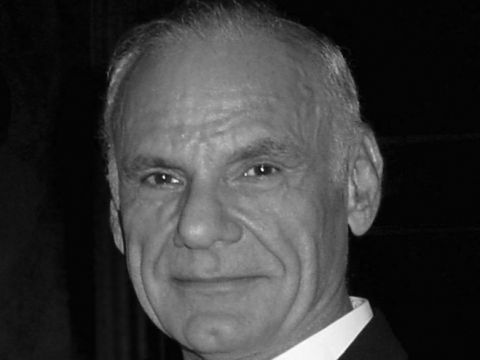In 1966, the U.S. Department of Defense hired Roberts to design the ARPAnet, a computer network that would connect various research outfits across the country. He based the network on a brand-new concept called “packet-switching,” and thanks in large part to this choice, the ARPAnet would eventually morph into the modern Internet.
This past April, in recognition of his work, Larry Roberts was inducted into the Internet Society’s (ISOC) Internet Hall of Fame, alongside such seminal thinkers as Sir Tim Berners-Lee, the father of the web; Ray Tomlinson, the father of email; and Vint Cerf and Bob Kahn, the fathers of TCP/IP, the fundamental protocols that underpin the Internet.

The irony is that Larry Roberts didn’t want to build the ARPAnet. As internet historian Jim Pelkey puts it, Roberts was “blackmailed” into taking the job.
In the early 1960s, Roberts was a researcher at MIT’s Lincoln Lab on the outskirts of Boston, where he built a system that connected two of the massive computers of the day: one at MIT and one in Santa Monica, California. It didn’t operate beyond those two “nodes,” but it used a technique that would allow for much larger networks. It sent information by breaking it into tiny pieces. These weren’t called network packets, but that’s what they were.
“Yes, it was a two-node network, and that’s not very topologically exciting,” Cerf says. “But he was able to show that cutting things up into packets and then reassembling them and so on made sense.”
Roberts was building on earlier research from an MIT colleague named Leonard Kleinrock, who would later play a role in the first Internet transmission. “Kleinrock had cracked a particularly hard problem in order to solve the creation of these networks,” he says. “So Len gets credit for doing some of the math, and Larry gets credit for testing it in a practical way.”
Then Roberts got a call from the folks at ARPA — the research arm of the Department of Defense — asking if he would design the new research network they were putting together.
Roberts said no. Multiple times. He lived outside of Boston, and the ARPA offices were in D.C. But then the director of ARPA realized the government agency could take advantage of the fact that it supplied more than 50 percent of the funding for Lincoln Lab. “They decided to call up the director of Lincoln Labs and say: ‘You won’t get any more funding unless you send Larry Roberts down,’” says Vint Cerf. “That was fairly persuasive.”
Roberts paints a slightly different picture. “The director of Lincoln Lab called me into his office and said it would be a good thing to do. But he said he would protect me, and bring me back if I didn’t like it,” he says. “They were blackmailing Lincoln, not me.” Whatever the case, he moved to D.C. And he stayed.
In designing the ARPAnet, Roberts expanded on the work he’d done at MIT, using those tiny data packets to send information from place to place. Around the same time, two other researchers were working on similar ideas: Paul Baran at the RAND Corporation and Donald Davies at Britain’s National Physical Laboratory. It was Davies who coined the term “packet,” and both researchers influenced the ARPAnet is small ways. But it was Roberts who designed this seminal network.
The ARPAnet went live in October of 1969, when the first transmission was sent from a machine at the University of California at Los Angeles to one at the Stanford Research Institute 350 miles away. Leonard Kleinrock led the team at UCLA, and one of the graduate students working alongside him was Vint Cerf.
By the end of that year, the network extended to a pair of additional research operations: the University of California Santa Barbara and the University of Utah. Roberts left ARPA in 1973 to start a commercial packet-switching outfit called Telenet, but the seeds were sown.
By the mid-1970s, Vint Cerf and Bob Kahn had built TCP/IP, and over the next 15 years, these protocols would spread not only across the ARPAnet but other networks around the world. Somewhere along the way, the Internet came of age.
Yes, the Internet has many founders. But if you had to pick one, Larry Roberts isn’t a bad choice.
Written by Wired Reporter Cade Metz, this article is the twenty-second piece in
an ongoing series by Wired magazine on the 2012 Internet Hall of Fame inductees.